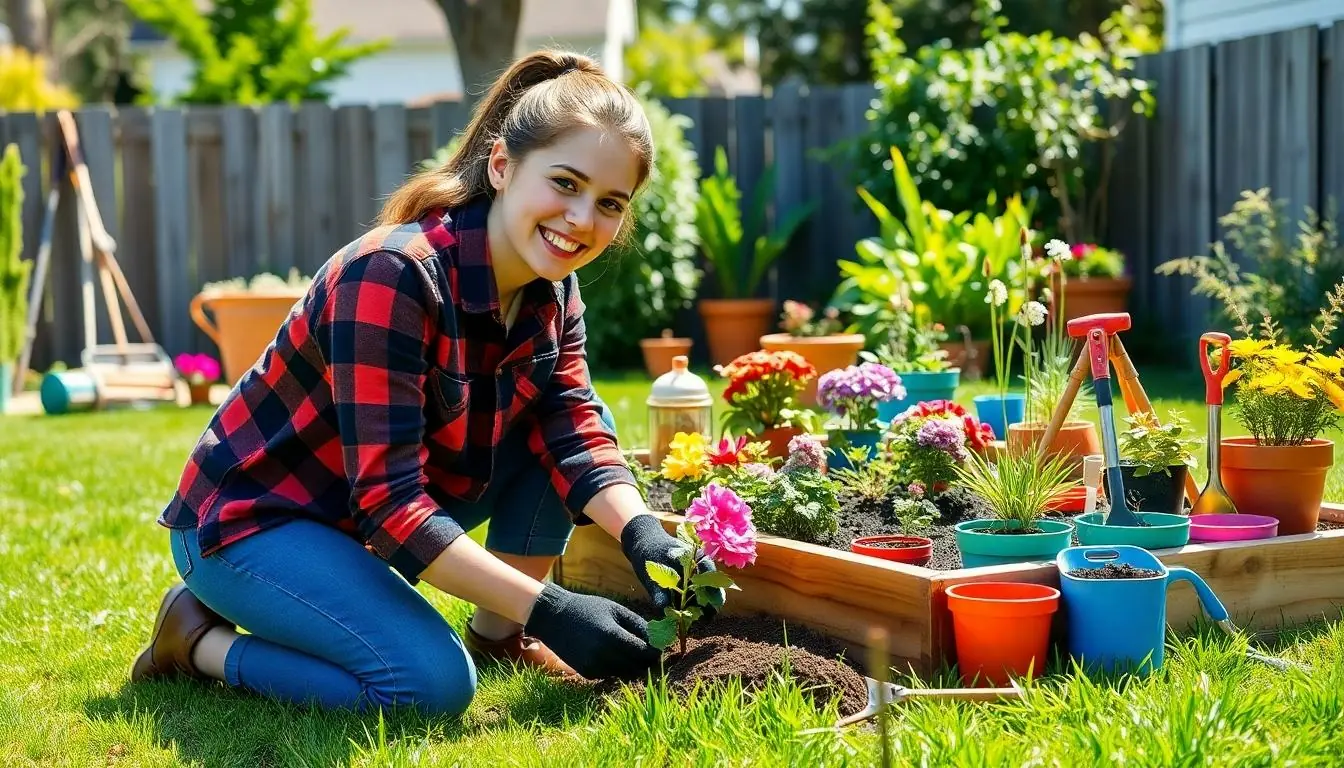Table of Contents
ToggleIn a world where cat videos reign supreme and influencers seem to have their own gravitational pull, social media optimization is the secret sauce that can turn a humble post into viral gold. It’s not just about tossing out a tweet or sharing a meme; it’s about crafting a digital masterpiece that captures attention and drives engagement.
Overview of Social Media Optimization
Social media optimization enhances an organization’s online presence. It involves strategically curating content that resonates with audiences to improve engagement and visibility.
Definition and Importance
Social media optimization refers to the process of harnessing social media platforms to amplify reach and engagement. It plays a crucial role in building brand awareness and cultivating relationships with audiences. Successful optimization leads to increased website traffic, improved search engine rankings, and higher engagement rates. As users interact with compelling content, businesses experience growth in customer loyalty and brand credibility. Analytics indicate that optimized posts significantly boost shareability, influencing viral success.
Key Components of Social Media Optimization
Effective social media optimization relies on several key components. First, content quality must be prioritized to maintain user interest. Second, frequency of posts determines visibility; consistent posting increases brand awareness. Third, leveraging hashtags enhances discoverability among broader audiences. Fourth, engaging with followers through comments fosters community and loyalty. Fifth, analyzing metrics offers insights into audience behavior, informing future strategies. Integrating these components results in a cohesive approach that maximizes impact across social media channels.
Strategies for Effective Social Media Optimization

Effective social media optimization relies on well-crafted strategies. These strategies enhance a brand’s online visibility and foster engagement.
Content Creation and Curation
Prioritize high-quality content that resonates with target audiences. Engaging visuals, informative articles, and entertaining videos capture attention effectively. Create a content calendar to ensure consistent publishing. Curate relevant industry news and trends to demonstrate authority. Share user-generated content to boost authenticity and connect with followers. Use tools like Canva for eye-catching graphics and BuzzSumo for trending topics. Constantly analyze the performance of each piece to refine future content.
Audience Engagement Tactics
Engagement can significantly enhance social media presence. Respond promptly to comments and messages to foster community interaction. Utilize polls and questions to encourage audience participation. Share behind-the-scenes content to humanize the brand. Encourage followers to share their experiences with the brand through testimonials. Collaborate with influencers to reach broader audiences. Monitor audience feedback to improve strategies, ensuring content aligns with their interests. Regular engagement leads to stronger relationships and increased brand loyalty.
Tools and Resources for Social Media Optimization
Effective social media optimization relies on the right tools and resources to streamline processes and maximize engagement.
Analytics and Insights Tools
Analytics and insights tools track performance across various platforms. Google Analytics offers detailed reporting on user interactions. Tools like Hootsuite and Sprout Social provide comprehensive insights into audience engagement and demographics. By analyzing engagement metrics, brands can identify top-performing content and adjust strategies accordingly. Facebook Insights allows users to understand post reach and fan engagement rates, enhancing future content decisions. Businesses leverage these analytics to inform their approaches effectively, increasing overall impact.
Scheduling and Management Tools
Scheduling and management tools streamline workflow for social media content. Buffer simplifies post scheduling across multiple platforms, enabling users to maintain a consistent presence. Later allows brands to visually plan their Instagram feeds, ensuring a cohesive aesthetic. Tools like SocialBee help categorize and automate content sharing, saving time while maximizing reach. All-in-one platforms like CoSchedule integrate scheduling with analytics, making it easier to adjust content based on performance. Utilizing these resources, brands enhance organization and efficiency, fostering stronger connections with their audience.
Measuring Success in Social Media Optimization
Measuring success in social media optimization involves tracking key metrics and evaluating overall effectiveness. Data-driven insights help organizations refine their strategies based on performance.
Key Performance Indicators (KPIs)
Monitoring KPIs reveals how well social media efforts align with business objectives. Engagement rate reflects audience interaction with posts and helps assess content resonance. Reach indicates the total number of users who see content, showing visibility and potential brand awareness. Conversion rate measures how effectively social media leads transform into valuable actions, such as website visits or purchases. Tracking follower growth illustrates audience expansion over time, showcasing brand appeal. Regularly evaluating these metrics enables brands to make informed adjustments for optimized results.
Evaluating Return on Investment (ROI)
Determining ROI assesses the financial impact of social media activities. Calculating ROI begins with understanding costs associated with content creation, advertising, and management tools. Measuring revenue generated from social media leads highlights the effectiveness of campaigns. Comparing revenue to investment provides insight into profitability. Brands often utilize customer lifetime value (CLV) to understand long-term benefits and relationships built through social engagement. Analyzing these factors helps brands make strategic decisions for future initiatives, ensuring resources yield maximum benefits.
Social media optimization is essential for any brand aiming to thrive in today’s digital landscape. By focusing on quality content and strategic engagement brands can significantly enhance their online presence. Implementing effective strategies not only boosts visibility but also fosters deeper connections with audiences.
Utilizing the right tools and metrics allows brands to refine their approaches and ensure their efforts align with business goals. As the social media landscape continues to evolve staying proactive and adaptable will be key. Embracing these practices will ultimately lead to increased brand loyalty and a stronger online community.







